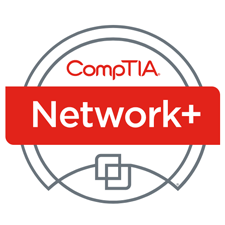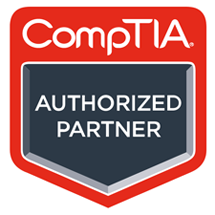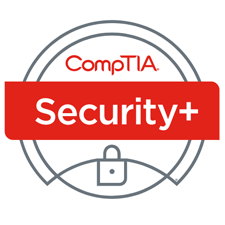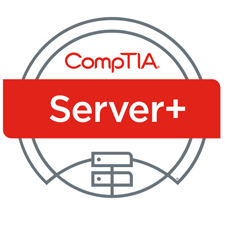iOS Development for Beginner
COURSE DESCRIPTION:
This course explores how to create apps for Apple iOS devices using core application components such as a GPS Receiver, accelerometer, timer, etc. At the end of this course, students will become proficient in Xcode, Interface Builder, Objective-¬‐C, understanding the common Cocoa Touch frameworks, multi touch concepts, multi--threading, and data storage on an iOS device. In addition, students will also learn how to write simple apps in order to consume data from a web service and how to write apps with multiple tabs and scrollable views.
What you will learn:
Introduction to the Objective-C Language
Developing Classes in Objective-C
Simplifying code with Modern Objective C
Structuring OO Class Hierarchies
Building GUIs
Interacting with the Operating System
Packaging Code for Reuse with Libraries and Frameworks
Introduction to iPhone and iPad Development
Creating the User Interface
Coding the User Interface with Objective-C with Objective-C and Presenting Data with Table Views
Coding the User Interface with Objective-C
Presenting Data with Table Views
Applying Navigation Tools and Techniques
Interacting with Web Services
Enhancing the User Interface
Final Exam and Discussion
Mock Interview Preparation
Course Outline:
Introduction to the Objective-C Language, Developing Classes in Objective-C, Simplifying code with Modern Objective C
Language and tools, Evolution of Objective-C, Xcode development environment
Objective-C fundamentals, Syntax and semantics, Pointers, structs, functions, Decisions, loops and logic
Defining classes, declaring the class interface with interface, programming the class using implementation, Encapsulating attributes with methods and properties
Creating and using classes, Importing the interface,
Writing constructors, Instantiating the classes and invoking methods
Simplifying code with Modern Objective C, Defining properties, Initializing variables
Reusing Classes through Aggregation, Building groups of complex, classes,
Defining relationships between classes, Incorporating the Has-A relationship in class design
Employing Foundation Framework classes, Simplifying application development with class libraries,
Working with collection classes including NSArray, NSDictionary, NSSet, Iterating collections with enumerators
Structuring OO Class Hierarchies, Building GUIs, Interacting with the Operating System, Packaging Code for Reuse with Libraries and Frameworks
Exposing interfaces with protocols, Defining optional and required contracts, Designing to an interface rather than an implementation
Inheritance and polymorphism, Identifying the Is-A relationship, Defining constructors in subclasses, leveraging dynamic binding through polymorphism
Categories and extensions, Creating categories to extend classes without inheritance, Re-declaring access rights with extensions, hiding private methods
Building GUIs, Exploiting the Cocoa framework, Designing Mac GUIs using Interface Builder, communicating between objects with targets, implementing the delegate pattern with @selector
Leveraging Cocoa patterns, Developing an application with MVC Registering bindings to observe changing data, responding to mouse and keyboard events, enhancing user interfaces with views and controls
Creating apps with Cocoa Touch, Designing GUIs for the iPhone and iPad Choosing appropriate controls for the limited screen space of mobile devices
Interacting with the Operating System, accessing the file system, Storing and retrieving data with NSFileManager,
Obtaining directory and file information, Archiving classes, Conforming to the NSCodingProtocol,
Working with NSData, NSKeyedArchiver and NSKeyed Unarchiver
Packaging Code for Reuse with Libraries and Frameworks, comparing dynamic and static libraries, wrapping code for public or private reuse, developing shared code
Introduction to iPhone and iPad Development, Creating the User Interface, Coding the User Interface with Objective-C with Objective-C and Presenting Data with Table Views
Overview of iPhone and iPad devices, Rich, revolutionary development platform and APIs, Programming considerations for handheld devices, Getting started with application development
exploring the iOS Software Development Kit (iOS SDK), Xcode, Cocoa Touch, Objective-C, Simulator, Interface Builder, Frameworks
Leveraging Storyboards, Linking views visually, Presenting views modally, Experimenting with different segues, Displaying contents in a Popover, Embedding views in containers
Building applications with Xcode, Enhancing productivity with templates, Importing external resources, Developing iPhone/iPad universal applications
Designing views with Interface Builder, Dragging and dropping objects, Linking objects to controllers
Controlling size, position and alignment, Defining scenes with the storyboard
Testing with the Simulator, Recognizing limitations in comparison to a real device, Test-driving the application
Programming with Objective-C, Applying the Model-View-Controller (MVC) design pattern, Working with Cocoa Touch Frameworks, Saving data to permanent storage
Reading and writing files, Persisting data with property lists,
Selecting the style to suit your application, Plain, Grouped, Indexed
Coding the User Interface with Objective-C and Presenting Data with Table Views, Applying Navigation Tools and Techniques, Interacting with Web Services, Enhancing the User Interface
Creating table views, Populating table view data Customizing table views with images and formatting, Responding to user row selection
Implementing delegate methods, Providing visual feedback
Displaying multiple views using the tab bar, Creating multiple tab
Linking views with a navigation controller, Building hierarchical applications
Drilling down through different levels of detail, Evaluating implementation decisions
SOAP vs. REST native support, Parsing JSON vs. other formats
Establishing network communications, Leveraging the iOS networking classes, Issuing HTTP requests and reading responses,
Recognizing gestures and adding animations, Responding to swipes and taps
View transitions: curling and flipping views, Animating view properties
Adding gesture recognizers to views, Rotating views with autorotation
Supporting different layouts, Posting updates to a database, Adapting to various device sizes
Final Exam and Discussion
Mock Interview Preparation
Entrance Requirements:
Associate plus 1 year of experience in computer field
Bachelors of other than computer field: Computer related experience or one or two classes for computer basics in college
H.S. Diploma plus three years of experience in computer/mobile Industry.
SCHEDULE DATES
iOS Development for Beginner / Programming
5 Hours a Day 4 Days a Week
12/10/2018 09/03/2018
$2,000.00
|
||||
iOS Development for Beginner / Programming
5 Hours a Day 4 Days a Week
Guaranteed to Run (GTR)
10/03/2018 09/07/2018
$2,000.00
|
||||
iOS Development for Beginner / Programming
5 Hours a Day 4 Days a Week |
Guaranteed
to Run (GTR) |
12/10/2018
09/03/2018 |
$2,000.00 | |
iOS Development for Beginner / Programming
5 Hours a Day 4 Days a Week |
Guaranteed
to Run (GTR) |
10/03/2018
09/07/2018 |
$2,000.00 | |
- CompTIA
- CISCO
- EC-Council
As an authorized CompTIA partner, Institute of Information Technology offers up-to-date CompTIA training and certification courses. A CompTIA certification is an international industry credential.
- CompTIA A+
- CompTIA Network+
- CompTIA A+ and Network+ Boot Camp
- IT Professional Bootcamp
- CompTIA Security+
- CompTIA Server+
- CompTIA Project+
- CompTIA Cybersecurity Analyst (CySA+)
- CompTIA Train Teh Trainer (CTT+)
- CompTIA Cloud+ Training
- CompTIA PenTest+ Certification Training
- CompTIA CDIA+
- CompTIA Linux+ Powered by LPI
- CompTIA Advanced Security Practitioner (CASP) Training
- Network and System Administrator
- Computer Support Specialist
- Computer Systems Networking and Telecommunications Specialist
- Network and System Administrator Manager
- Computer Support Aadministrator
- Computer And Information Systems Security Analyst
- Computer Systems Networking and Telecommunications Administrator
- Computer Systems Networking And Telecommunications Manager
- Network And System Administrator Manager Professional
Institute of Information Technology is honored to be an authorized CISCO Network Academy Training Institute. CISCO is the worldwide leader in networking. CISCO has shaped the future of the internet by transforming how people connect, communicate and collaborate.
- CISCO MASTER
- Interconnecting Cisco Networking Devices, Part 1 - ICND1
- Interconnecting Cisco Networking Devices, Part 2 - ICND2
- CCNA Routing and Switching
- CCNP Routing and Switching
- CISCO-Individualized CCNA Routing and Switching
- CCNA Security
- CCNP Security
- CCNA Collaboration
- CCNP Collaboration
- CCNA Service Provider
- CCNP Service Provider
- Implementing Cisco Collaboration Devices
- Implementing Cisco Video Network Devices
- Troubleshooting Cisco IP Telephony & Video
- Implementing Cisco Collaboration Application
- Implementing Cisco IP Telephony & Video, Part 1
- Implementing Cisco IP Telephony & Video, Part 2
Institute of Information Technology has the honor of being an authorized EC-Council Accredited Training Center. EC-Council is the worldwide leader in Cyber Security course content. EC-Council has changed the future of the internet by transforming how people deal with and prevent cyberattack.
- Hacking Apprentice
- Hacking Professional
- Cybersecurity Master
- Hacking Master
- Certified Ethical Hacker Training Program C| EH
- Certified Ethical Hacker Practical C| EH
- Certified Network Defender Certification C| ND
- Licensed Penetration Tester Master L| PT (Master)
- Computer Hacking Forensic Investigator Certification C| HFI
- EC-Council Certified Security Analyst (ECSA) Penetration Testing
- Certified Secure Computer User C| SCU
- Certified Network Defense Architect C| NDA
- Project Management in IT Security P| MIT
- EC-Council Network Security Administrator E| NSA
- Certified Cyber Marketing Professional C| CMP
- EC- Council Certified Incident Handler Program E| CIH
- EC-Council Certified Security Specialist E| CSS
- EC-Council Certified Secure Programmer .NET E| CSP
- EC-Council Certified Disaster Recovery E| CDR
- Virtualization Technology Professional E| CVT
- EC-Council Certified Encryption Specialist E| CES
- EC-COUNCIL DISASTER RECOVERY PROFESSIONAL E| DRP
- Advanced Network Defense (CAST 614)
- Certified Application Security Engineer (CASE)
- Cyber Security Boot Camp



